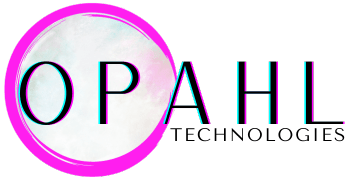The Secret Behind Nvidia’s Low Employee Turnover: Balancing Intense Work Culture with Generous Compensation
In the fast-paced world of technology, companies are constantly pushing the boundaries to stay ahead of the curve. One such company that has been making waves in recent years is Nvidia, a leading manufacturer of AI chips. However, behind the company’s success lies a work culture that demands long hours and intense pressure from its employees. Despite this, Nvidia boasts an impressively low employee turnover rate of just 2.7%. So, what’s the secret behind their ability to retain talent in such a challenging environment?
The Nvidia Work Culture: Long Hours and High Pressure
According to a recent New York Post article, Nvidia employees are expected to work seven days a week, often until 2 a.m. This grueling schedule is coupled with a high-pressure environment, where shouting matches in meetings are not uncommon. CEO Jensen Huang is known for pushing his employees to their limits, believing that this pressure is necessary for achieving **extraordinary results**.
While this type of work culture may seem unsustainable, Nvidia has managed to maintain a low employee turnover rate. The question is, how do they do it?
The Power of Generous Compensation: Nvidia’s Secret Weapon
The answer lies in Nvidia’s generous compensation packages. The company offers its employees **substantial stock grants** that typically vest over a four-year period. This means that employees who have been with the company for five years are likely to become millionaires, thanks to the appreciation of Nvidia’s stock value.
These financial incentives have proven to be a powerful tool in retaining talent. Despite the high-stress work environment, employees are willing to endure the pressure in exchange for the potential financial rewards. As a result, Nvidia’s worker attrition rate remains remarkably low, at just 2.7%.
The Implications for the Industry: Balancing Work Culture and Compensation
Nvidia’s approach to employee retention raises important questions for the industry as a whole. While the company’s success cannot be denied, it’s worth considering the long-term sustainability of such a work culture. Can employees continue to perform at their best under constant pressure, even with the promise of financial rewards?
Moreover, Nvidia’s strategy highlights the importance of balancing work culture with compensation. While generous pay packages can certainly help retain talent, it’s equally important to foster a healthy work environment that prioritizes employee well-being. This is particularly relevant in the tech industry, where burnout and mental health issues are becoming increasingly prevalent.
Looking to the Future: Lessons from Nvidia’s Approach
As the tech industry continues to evolve, companies will need to find new ways to attract and retain top talent. Nvidia’s approach offers valuable lessons in the power of compensation as a retention tool. However, it also serves as a reminder of the importance of creating a work culture that supports employee well-being.
Moving forward, companies may need to find a balance between the two, offering competitive compensation packages while also prioritizing employee health and satisfaction. By doing so, they can create a sustainable work environment that not only attracts top talent but also fosters long-term success.
#Nvidia #EmployeeRetention #WorkCulture #Compensation #TechIndustry
In conclusion, Nvidia’s ability to retain talent in a high-pressure work environment is a testament to the power of generous compensation packages. However, as the industry evolves, companies may need to reconsider their approach to employee retention, balancing financial incentives with a focus on employee well-being. By doing so, they can create a work culture that not only drives success but also supports the long-term sustainability of their workforce.
Are you looking to navigate the complexities of employee retention in the tech industry? Our team of experts at Opahl Technologies can help. Contact us today to learn more about our strategic solutions for fostering a successful and sustainable work environment.
-> Original article and inspiration provided by Ariel Zilber
-> Connect with one of our AI Strategists today at Opahl Technologies


